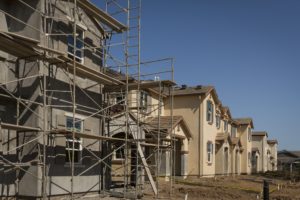ADVOCACY
Emergency Response Policies for Housing
 Emergencies require immediate action, tailored to the impending loss – in this case, a severe lack of housing. What policies can the State, local governments, builders and the public most immediately implement on a short-term emergency basis, while still considering, debating and working through more long-term solutions? With that rationale in mind, BIA-LAV has put together Emergency Response Policies for Housing.
Emergencies require immediate action, tailored to the impending loss – in this case, a severe lack of housing. What policies can the State, local governments, builders and the public most immediately implement on a short-term emergency basis, while still considering, debating and working through more long-term solutions? With that rationale in mind, BIA-LAV has put together Emergency Response Policies for Housing.
These emergency responses break down eight different housing policy topics and how they each affect the production of housing: The Missing Middle, Make Affordable Housing Projects Affordable, Inclusionary Zoning, Promote Utility Partnerships for Housing, Encourage Creative Housing Opportunities, Climate Change and Housing, Rent Control, and the CEQA Relief for Housing. Below, we have distilled each of these topics into quick one-page reads that explain the issue and various solutions to employ during a Housing Emergency. Not all of these housing solutions are new, but the way we think of them should be.

 BECOME A MEMBER!
BECOME A MEMBER!